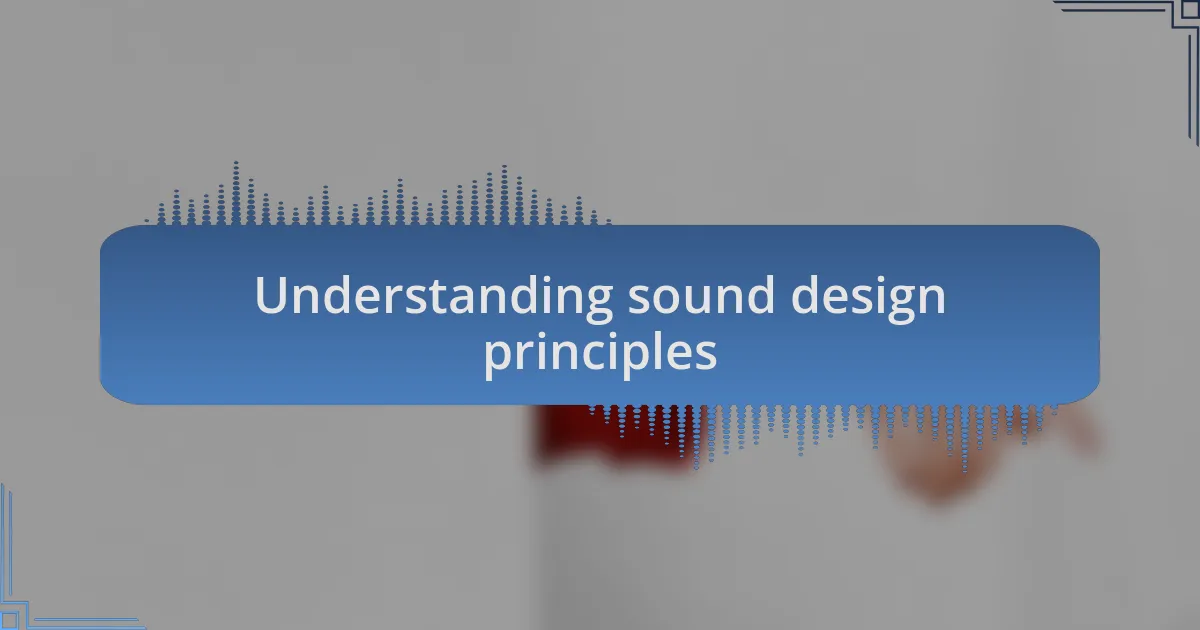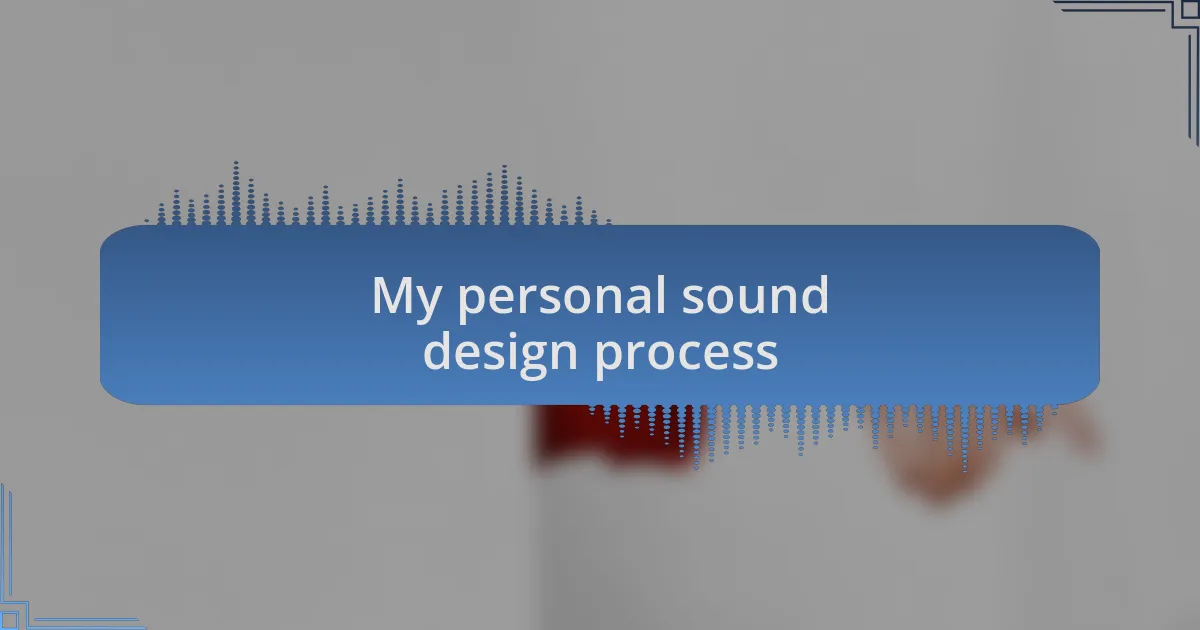Key takeaways:
- Sound design combines auditory elements to create immersive sensory experiences, balancing silence and music for emotional impact.
- Layering sounds can enhance depth and atmosphere, making subtle contributions to the audience’s engagement.
- Inspiration from everyday environments, like nature, informs the creative process for sound design.
- Collaboration and feedback are crucial for refining compositions, leading to improved sound design through shared insights.

Understanding sound design principles
Sound design is not just about what you hear; it’s about creating a sensory experience. I remember the first time I realized the impact of a well-crafted soundscape while watching an indie film. The eerie silence followed by a sudden score shift heightened my emotional response, illustrating how sound can manipulate mood and narrative in profound ways.
One principle that stands out is the balance between silence and sound. I once worked on a project where the absence of sound during key moments amplified the tension, leaving the audience hanging on every visual cue. Have you ever noticed how silence can feel just as powerful as music? This interplay is crucial for engaging the listener and guiding their emotional journey.
Another essential component is layering sounds to create depth. I learned this during a collaborative project, where we meticulously stacked ambient noises to build a rich atmosphere. It’s fascinating how these layers, often unnoticed, contribute significantly to the overall experience, making the audience feel like they are immersed in the environment you’ve crafted.

My personal sound design process
When I approach sound design, my process often begins with inspiration from the world around me. For example, I remember walking through a forest, captivated by the subtle blend of rustling leaves and distant bird calls. This experience sparked a project where I aimed to replicate that unique auditory atmosphere, and it taught me just how powerful nature sounds can be in evoking a specific mood. Have you ever tried capturing sounds from your surroundings to influence your work?
Next, I dive into experimentation. For a recent project that required a whimsical touch, I collected everyday objects and turned them into instruments—think tapping on glass jars or crumpling paper. This creative exploration not only added uniqueness to the sound palette but also highlighted the concept of resourcefulness in sound design. It’s amazing how innovation often stems from constraints, don’t you think?
Finally, I focus on refining my compositions through feedback and iteration. I’ve found that sharing rough cuts with trusted peers can reveal new perspectives I might have missed. Their reactions often guide me in tweaking elements for maximum impact, meaning that collaboration becomes a vital part of my process. Have you ever experienced that ‘aha’ moment after discussing your work with others? It’s moments like these that enrich my sound design journey.